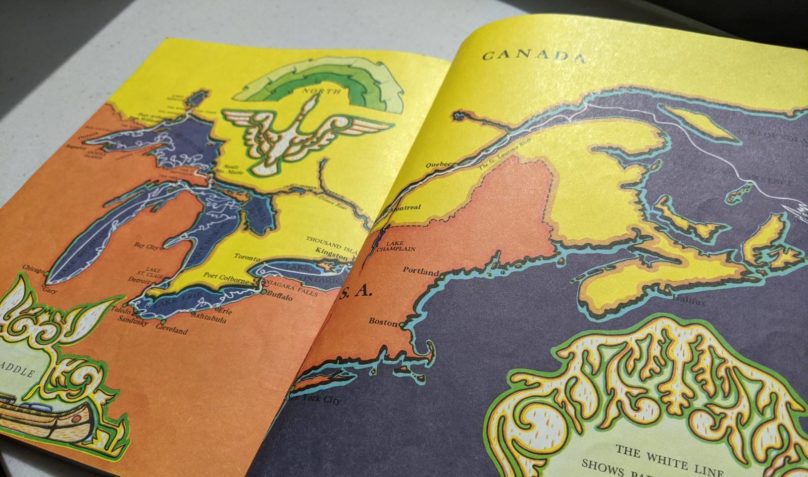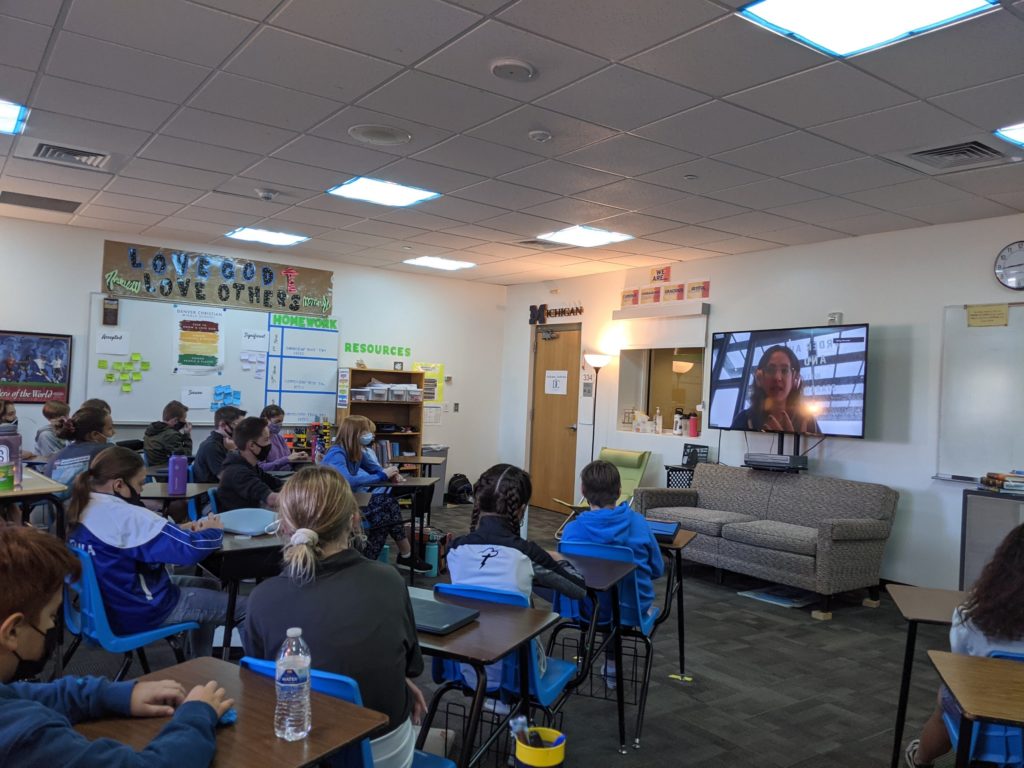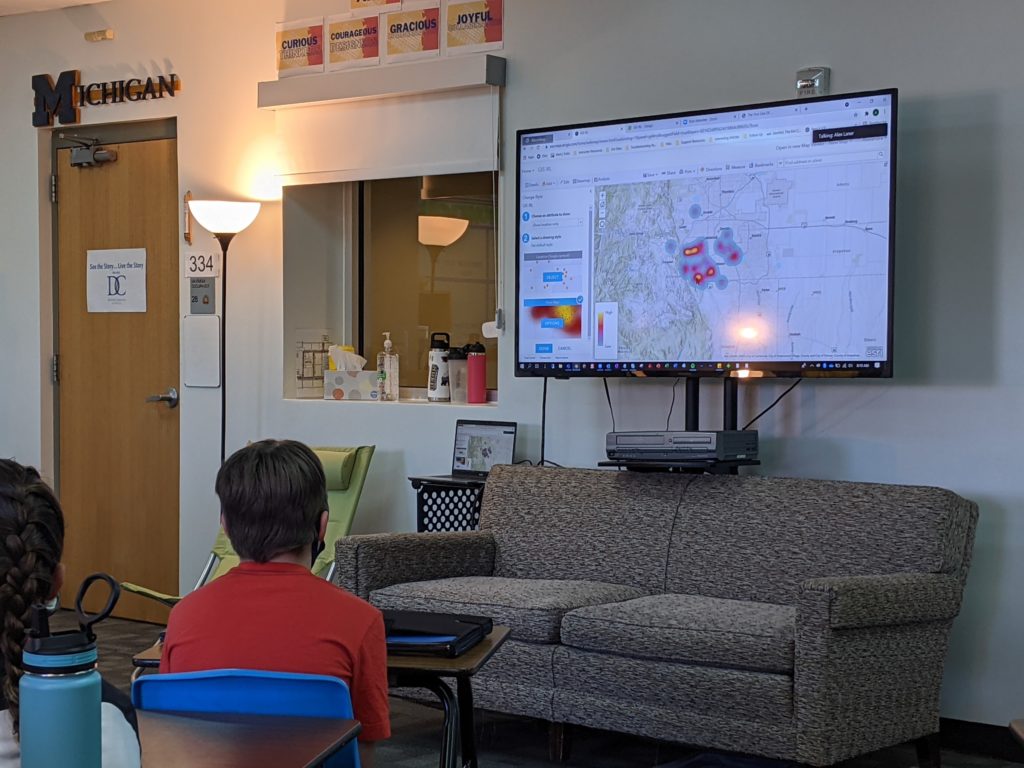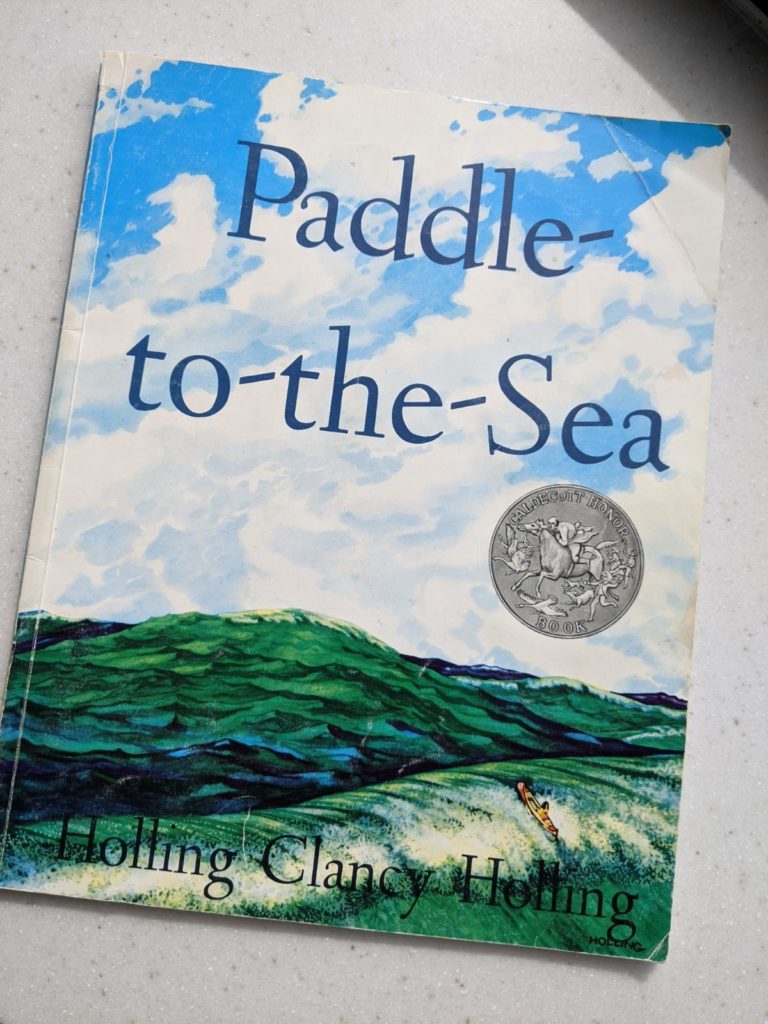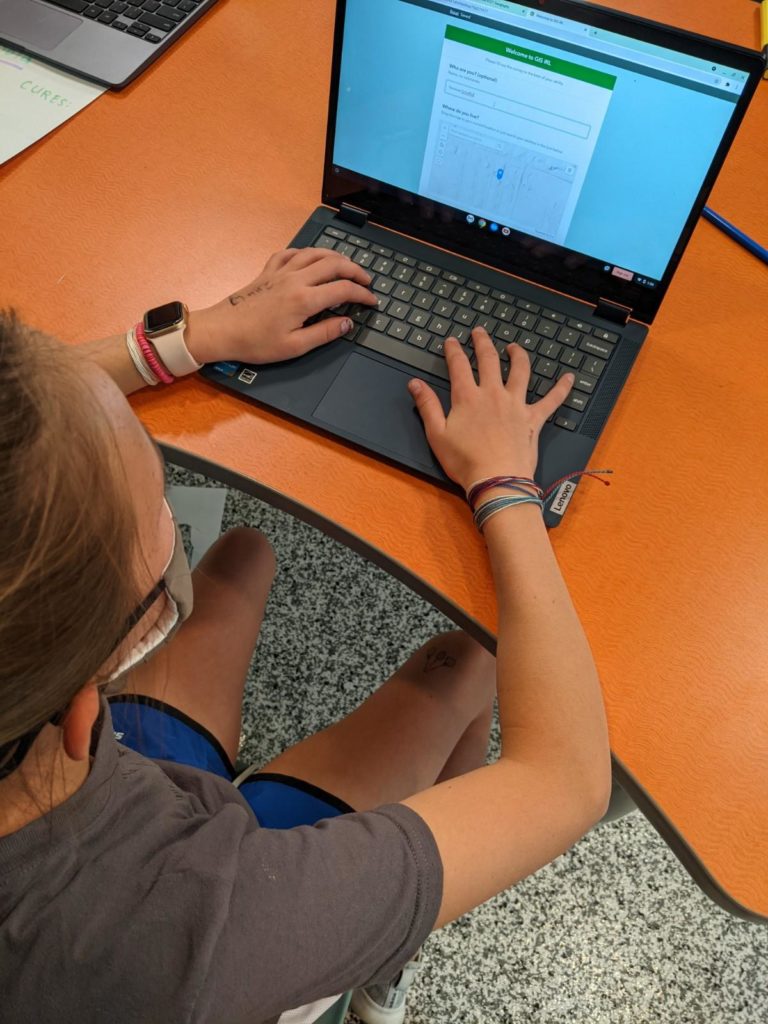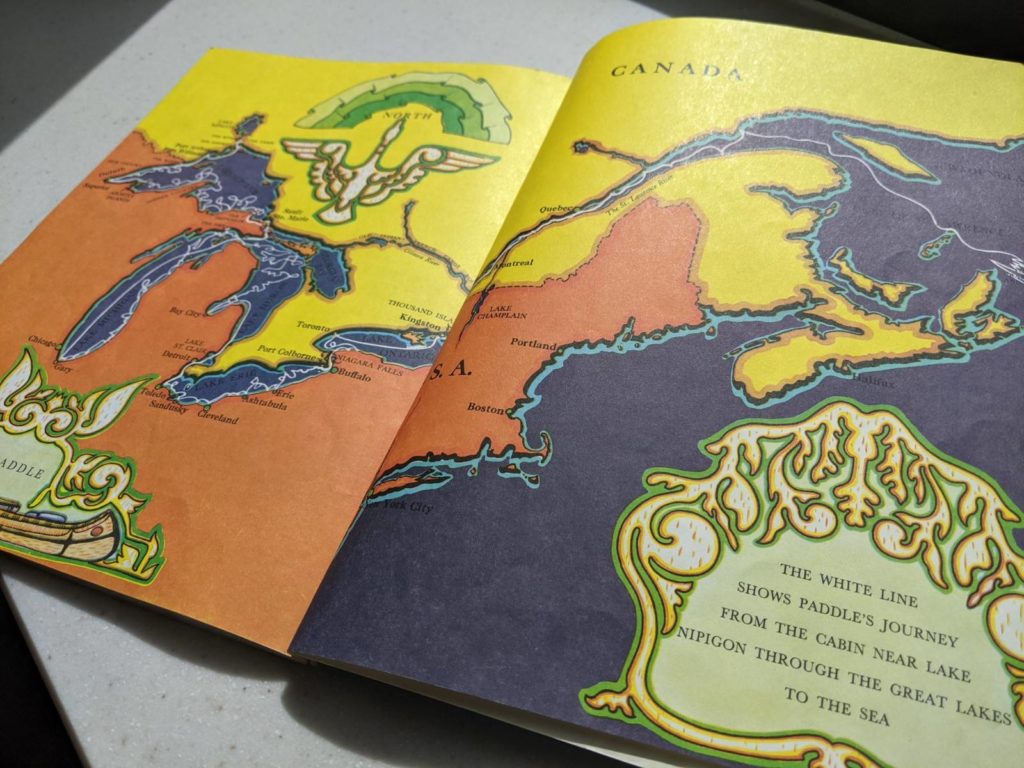Our theme this year is “See the Story, Live the Story” and as a community we are incorporating this theme into our classroom instruction.
Mapping a Path
Where should the next Starbucks location go? At what rate are our lakes and rivers drying up? Did you know that GIS (geographic information system) software can answer these and many more questions?
GIS software creates maps that represent various layers of data and allows them to be represented on the same map! Ever used Google Maps? That’s GIS. Looked at a Covid map on the news? You guessed it, GIS. This software is used around the world and across all industries.
Hello, cool career opportunities!
Denver Christian 7th grade geography students have been studying maps and cartography, and most recently, digital cartography – which brought us to learning about GIS at a deeper level. We recently welcomed to our classroom Alex Laner, a representative from ESRI, the world’s largest GIS software company in the world!, (via Zoom from California!). Alex introduced us to the software that makes maps for many of the world’s most successful companies and organizations. Before her visit, Alex had students fill out a survey and then used our survey data to create a map so we could see how the software works, as well as how simple data such as, “what’s your lucky number,” tells a greater story.
GIS maps help share empowering stories which can then be used to combat global concerns such as poverty, education, incarceration rates, and even climate change.
“I have become more interested in maps. I had no idea that they could be used for so many different things that I thought had no connection to maps. I’m overall amazed that anyone can use GIS.”
7th grade geography student
In the Classroom and Beyond
Our theme this year is “See the Story, Live the Story” and as a community we are incorporating this theme into our classroom instruction, and Denver Christian seventh graders are diving into a year of curriculum that encompasses several connections to our “See the Story, Live the Story” theme.
Currently, students are using a published children’s story, “Paddle To The Sea,” to learn about the geography of the Great Lakes region, cultural values of the US and Canada, and many geographic stops along the way such as Isle Royale, the Soo Locks, Mackinac Bridge, Copper Mining, and Niagara Falls. The project includes map making, with the option of using GIS to chart the journey of a whittled paddle person through the Great Lakes basin, and witness hope in humanity and dreams along the way. Will Paddle make it to his destination? Follow along on a GIS Map of his journey.
Evident throughout the year is the invitation to “See the Story, Live the Story,” in this seventh-grade Geography course. Students will both compare and challenge their world views through concepts and topics like:
- Understanding world views and biases – The Danger of A Single Story.
- Stories of various cultures, religions, and traditions from around the world including countries in Asia and Africa
- Hebrew and Jewish land and culture for a better understanding of our map, the Bible
- Our own closets and possessions – where they come from, how they get here, who made them, and what the impacts are to the global community
- Several guest speakers bring in first-hand stories and experiences from narratives around the globe
- Wrestling with injustice and “the least of these” in various niches of the past, present, and future world and how we “Love God, Love others” in the midst of culture.
Mapping our Personal Journey
At the core of “See the Story, Live the Story” is recognizing that we all play an active, ongoing, role in God’s ever-evolving story. Each one of us has been cut out of a quarry and specifically placed to help build the greatest story of all time!
Our guide – or map, so to speak – is the Bible, which helps us to understand God as the author of our story. Studying the Bible and our world through the lens of scripture invites us to ask deeper questions such as “who am I?” and “what am I doing here?” It is the collective hope of the faculty at Denver Christian that in this process students fully know the love of our Creator and then express that same love back towards God, others, and themselves.
Once we know we belong and to whom we belong, we then have the capacity to look beyond ourselves and ask questions such as “who is my neighbor?” and “how do I love them well?” As Mr. Covey, our head of school, has said, “living into God’s story isn’t a passive exercise. Rather, learning and development as learners are important to God and to the neighbors we are called to love.”
Stay tuned to social media for continued windows into the larger story of our classroom experiences this year to see how that connects with our school theme of “See the Story, Live the Story.” We invite you to join us in learning how to take an active role in transforming culture with Christ-like Ahavah (love).
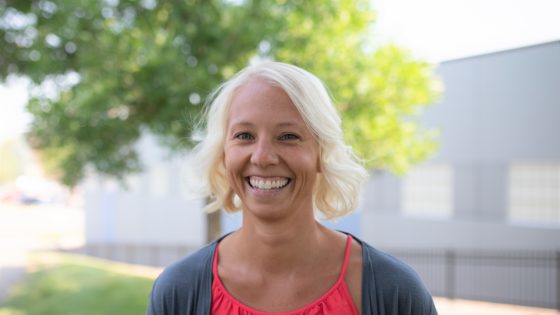
Lynae Steketee-Gesink is a middle school geography teacher at Denver Christian School. She loves outdoor activities such as cycling, hiking, camping and rock climbing. She is a fan of the University of Michigan athletics and enjoys following their various teams. A learning unit that includes some Michigan geography reminds her of her Michigan roots!


